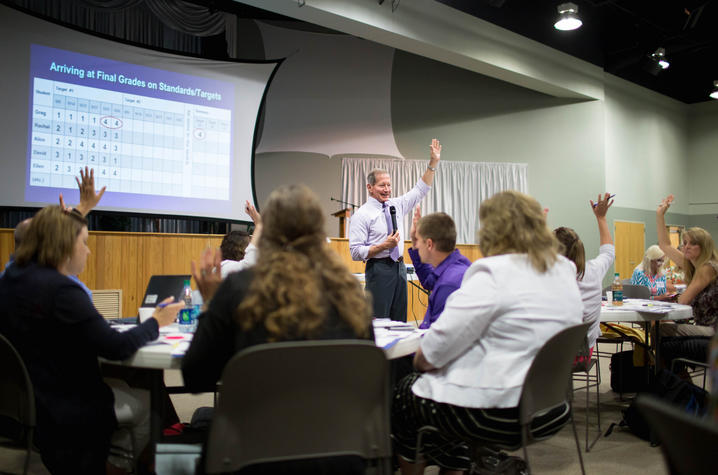What’s in a Grade: Guskey Co-Authors Paper Analyzing How the US Evaluates Student Learning

LEXINGTON, Ky. (Jan. 12, 2017) — Thomas Guskey is among a group of eight researchers who set out to tackle the question “what do grades mean?” Their work is the first of its kind to synthesize 100 years of research from five types of studies.
The resulting article, “A Century of Grading Research: Meaning and Value in the Most Common Educational Measure,” is the lead article in one of the centennial issues of Review of Educational Research, a journal of the American Educational Research Association. Guskey is a professor in the University of Kentucky College of Education’s Department of Educational, School, and Counseling Psychology.
During the 19th century, reports on student learning took place as conversations between parents and teachers in the student’s home, which later evolved into written narratives. As school populations grew, time constraints on teachers led to the use of percentage grades. But studies in the early 20th century that showed the lack of consistency among teachers in assigning grades based on a scale with 100 distinct levels of performance led educators to abandon percentage grades in favor of scales with fewer categories, such as the letter grade scale still commonly used today. Many modern educators have now moved beyond the single letter grade to offer detailed reports of students’ progress on more specific learning goals, referred to as “standards-based grading.”
As the collaborators sifted through thousands of articles, they took note of how grading, and perceptions of it, have evolved. They focused on five types of research during their analysis:
- Early studies on the reliability of grades (Teachers often assign different grades to the same assessment of student performance because they don’t agree on what is most important for students to learn);
- Quantitative studies of the composition of K-12 report card grades (Teachers vary widely in the criteria they use to assign grades, making it difficult for students and their parents to understand what a grade really means);
- Survey and interview studies of teachers’ perceptions of grades (Although grades usually reflect students’ academic achievement, some teachers use grades to reward students for appropriate behaviors, like regularly attending class, or to punish students for a perceived lack of effort or non-compliance with class rules, like not turning in assignments on time);
- Studies of standards-based grading (Modern efforts to improve grading often involve dividing subjects into subskills or standards, and grading each separately. Language arts, for example, may include separate grades for reading, writing, listening, speaking and language skills); and
- Grading in higher education (With little knowledge of effective grading policies or methods, most college professors grade students as they were graded, perpetuating the use of ineffective practices).
The authors contend the gap between the knowledge base and current practice may be greater in grading than in any other area of education today.
Guskey hopes the paper’s findings will lead to more effective practice, point education researchers to future areas of study, and add to the national conversation on grading policies.
The paper’s authors include:
- Susan M. Brookhart, Duquesne University
- Thomas R. Guskey, University of Kentucky
- Alex J. Bowers, Teachers College, Columbia University
- James H. McMillan, Virginia Commonwealth University
- Jeffrey K. Smith, University of Otago
- Lisa F. Smith, University of Otago
- Michael T. Stevens, University of California, Davis
- Megan E. Welsh, University of California, Davis




